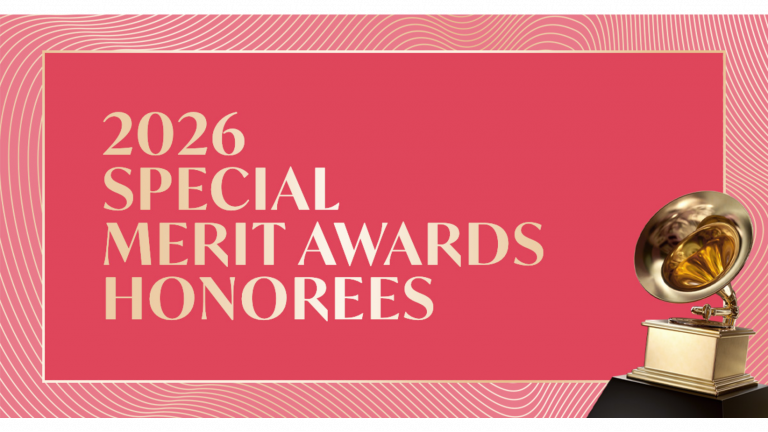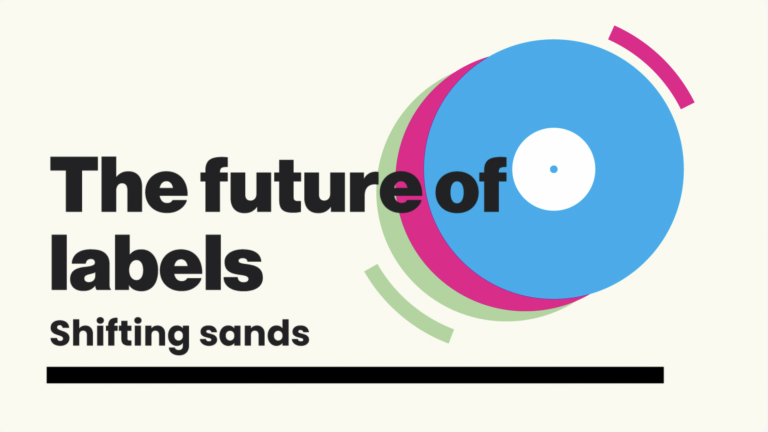Lofi music has become a favorite for many, whether you’re studying, relaxing, or just looking for some chill vibes. If you’re new to this genre or just want to find some great beats to download for free, you’ve come to the right place. This guide will walk you through what lofi music is, where to find it, and how to make your own tracks. Let’s get started!
Key Takeaways
- Lofi music is a blend of chill beats and relaxing sounds, perfect for background listening.
- There are many websites where you can find free lofi music downloads, but it’s important to choose reliable sources.
- Genres within lofi include chillhop, ambient sounds, and jazz influences, each with its unique vibe.
- Creating your own lofi beats can be fun and rewarding with the right tools and techniques.
- Joining online communities can help you connect with other lofi fans and share your music.
Exploring The World Of Lofi Music

What Is Lofi Music?
Okay, so what is lofi music anyway? It’s more than just music with a slightly fuzzy sound. Lofi, short for "low fidelity," is a genre characterized by intentional imperfections. Think of it as music that embraces the flaws – the hiss of a tape, the crackle of vinyl, or a slightly off-key note. It’s all part of the charm. It’s like the musical equivalent of a cozy, rainy day. It’s super popular for studying, relaxing, or just chilling out. You can download lofi tracks pretty easily these days.
The Origins Of Lofi Beats
Lofi didn’t just pop up out of nowhere. It has roots, and those roots are pretty interesting. A lot of people trace it back to hip hop. Producers started using samples and loops, and sometimes those samples weren’t exactly pristine quality. That’s where the "low fidelity" thing started to creep in. Artists like Nujabes and J Dilla are often credited with helping to shape the genre. They took those imperfections and turned them into something beautiful. It’s a testament to how something unexpected can become a whole movement. It’s also worth noting the influence of video game soundtracks and anime soundtracks, which often had a lo-fi quality due to technological limitations at the time. These sounds became nostalgic and were incorporated into the genre.
The Appeal Of Lofi Aesthetics
Why is lofi so appealing? It’s not just the sound; it’s the whole vibe. The visuals that go along with lofi music – think anime loops, chill landscapes, and cozy room setups – create a whole aesthetic. It’s comforting, nostalgic, and a little bit melancholic. It’s like a warm hug for your ears and eyes. Here’s why I think it works:
- It’s relaxing: The mellow beats and simple melodies are perfect for unwinding.
- It’s nostalgic: The lo-fi sound evokes a sense of nostalgia for simpler times.
- It’s relatable: The imperfections make it feel more human and authentic.
Lofi music offers a sense of calm and focus in a world that’s constantly demanding our attention. It’s a reminder to slow down, appreciate the simple things, and find beauty in imperfection.
Finding Quality Lofi Music Download Sites
Finding good spots to download lofi music can be tricky. There’s a lot of stuff out there, and not all of it is great or even safe. You want to make sure you’re getting good quality music and not accidentally downloading something that’ll mess up your computer. It’s like trying to find a decent coffee shop in a new city – you gotta do a little digging.
Top Platforms For Free Downloads
Okay, so where do you actually go to get this music? There are a few places that are pretty popular and generally reliable. I’ve had some good luck with these:
- Bandcamp: Lots of independent artists put their stuff up on Bandcamp, and many offer free downloads or "name your price" options. It’s a great way to support the artists too.
- SoundCloud: SoundCloud is huge, and while not everything is free, there’s a ton of lofi music available for free download. Just look for the download button.
- YouTube (with converters): This is a bit of a gray area, but you can find a lot of lofi mixes on YouTube and use a converter to download the audio. Just be careful about copyright stuff.
How To Identify Legitimate Sources
This is important. You don’t want to end up with a virus or a bunch of spam. Here are some things I look for:
- Check the URL: Does it look weird or suspicious? If it’s some random string of letters and numbers, be careful.
- Read reviews: See what other people are saying about the site. If there are a lot of complaints about malware or fake downloads, steer clear.
- Look for SSL: The website address should start with "https" and have a little padlock icon in the address bar. This means the site is using encryption to protect your data.
It’s always a good idea to use a reputable antivirus program and keep it updated. It’s like having a good lock on your front door – it won’t stop everything, but it’ll deter most problems.
User Reviews And Recommendations
One of the best ways to find good download sites is to ask around. Here’s what I’ve found helpful:
- Online forums: Check out forums dedicated to lofi music or music production. People often share their favorite resources.
- Social media groups: There are tons of Facebook groups and Reddit communities where people discuss lofi music. Ask for recommendations there.
- Artist websites: Sometimes, artists will link to their preferred download sites on their own websites. This is usually a pretty safe bet.
Here’s a quick table summarizing some popular platforms and their pros/cons:
| Platform | Pros | Cons |
|---|---|---|
| Bandcamp | Supports artists, high-quality audio | Not everything is free |
| SoundCloud | Huge selection, easy to use | Quality can vary, copyright issues can be a concern |
| YouTube Conv. | Massive library, easy access | Copyright issues, potential for low-quality audio, risk of shady sites |
Understanding Lofi Music Genres
Chillhop And Its Influence
Chillhop is probably the most popular subgenre of lofi. It’s characterized by its mellow vibes, combining elements of hip-hop with chill, atmospheric sounds. Think jazzy chords, boom-bap drum patterns, and a generally relaxed tempo. It’s the kind of music you can easily study or relax to. Chillhop has had a huge influence on the overall lofi scene, shaping the sound and aesthetic that many people associate with the genre. You can find tons of chillhop playlists on streaming services.
Ambient Lofi Sounds
Ambient lofi takes the chill factor up a notch. It focuses on creating immersive soundscapes using synthesizers, field recordings, and other atmospheric elements. It’s less structured than chillhop, often lacking a strong beat or melody. Ambient lofi is perfect for creating a calming environment or for focusing on tasks that require deep concentration. It’s all about the vibe. Some key characteristics include:
- Use of reverb and delay effects
- Emphasis on texture and atmosphere
- Minimalistic arrangements
Jazz Influences In Lofi
Jazz has been a major influence on lofi music since the beginning. Many lofi tracks incorporate jazz chords, melodies, and samples to create a nostalgic and sophisticated sound. The use of instruments like the piano, saxophone, and trumpet is common in this subgenre. Jazz-infused lofi often evokes a sense of nostalgia and urban coolness. It’s the perfect soundtrack for a rainy day or a late-night study session. I find that the best lofi music often has a jazz influence.
Lofi music is more than just a genre; it’s a feeling. It’s about embracing imperfections and creating something beautiful out of simplicity. The jazz influence adds a layer of depth and sophistication that sets it apart from other genres.
Creating Your Own Lofi Beats

Essential Tools For Beat Making
So, you want to make your own lofi beats? Cool! You don’t need a super fancy studio to get started. A decent computer and some software are the main things.
Here’s a basic list:
- DAW (Digital Audio Workstation): Think Ableton Live, FL Studio, Logic Pro X, or even GarageBand if you’re on a Mac. These are your main platforms for creating music.
- Headphones: You need something that gives you a clear sound. Closed-back headphones are good for recording, open-back for mixing.
- Audio Interface (Optional): If you plan on recording instruments or vocals, an audio interface will improve the sound quality.
- MIDI Keyboard (Optional): Makes playing chords and melodies way easier than clicking notes in a DAW.
Don’t get caught up in having the most expensive gear right away. Start with what you can afford and learn the basics. You can always upgrade later as you get better.
Tips For Crafting Unique Sounds
Lofi is all about vibe. Here are some things to keep in mind:
- Keep it simple: Don’t overcomplicate your beats. A few well-chosen sounds are better than a million layers.
- Experiment with effects: Reverb, delay, and chorus can add depth and character. Try using audio interface to get the right sound.
- Embrace imperfections: Lofi is supposed to sound a little rough around the edges. Don’t be afraid to leave in some hiss or crackle.
- Focus on the melody: A catchy melody is what will really make your beat stand out.
Incorporating Samples And Loops
Sampling is a huge part of lofi. You can find samples from old records, movies, or even YouTube videos. Just be careful about copyright! Here’s how to use them effectively:
- Chop and screw: Take a sample and chop it up into smaller pieces. Then, rearrange them or slow them down to create something new.
- Add effects: Use effects like reverb and distortion to give your samples a unique sound.
- Layer samples: Combine multiple samples to create a richer texture. You can find free beats online to get started.
- Make it your own: Don’t just use samples as they are. Tweak them, manipulate them, and make them your own.
The Role Of Lofi Music In Daily Life
Lofi For Studying And Focus
I’ve noticed a lot of people talking about how lofi helps them concentrate, and honestly, I get it. There’s something about the mellow beats that just fades into the background. It’s not like pop music where you’re constantly getting distracted by the lyrics or a crazy melody. It just is. I’ve been using it while studying for my history final, and it seems to help me stay on task longer. I’m not sure if it’s a placebo effect or what, but I’ll take it!
- Reduces distractions
- Creates a calming atmosphere
- Promotes longer study sessions
I think the key is that it’s not too engaging. It’s like white noise, but with a little bit of soul. It fills the silence without demanding your full attention, which is perfect for when you need to really focus.
Some people find that certain types of lofi work better than others. For example, some prefer more ambient sounds, while others like a bit of a beat. It’s all about finding what works for you. You can boost dopamine levels with the right music.
Using Lofi For Relaxation
Beyond studying, lofi is great for just chilling out. After a long day, I’ll often put on a lofi playlist and just unwind. It’s way better than watching TV, which can sometimes be too stimulating. I’ve even started using it during my meditation sessions. The gentle rhythms help me clear my head and relax. It’s like a mini-vacation for my brain.
- Reduces stress
- Promotes relaxation
- Improves sleep quality
Lofi Music In Creative Workspaces
I’ve also found that lofi can be really helpful when I’m trying to be creative. When I’m writing, for example, I’ll often put on a lofi playlist to help me get into the zone. It’s like it unlocks a different part of my brain. I’m not sure why, but it just seems to help me think more clearly and come up with new ideas. It’s also great for blocking out distractions when I’m working in a busy environment. I’ve noticed a lot of other creatives using it too, so I guess I’m not alone.
- Enhances creativity
- Blocks out distractions
- Promotes a focused work environment
Legal Considerations For Lofi Music Download
Understanding Copyright Issues
Copyright law is a big deal when it comes to music, and lofi is no exception. Basically, copyright protects the creators of original works, including music. This means that if you download lofi music without permission, you could be infringing on someone’s copyright. This can lead to some serious consequences, like getting sued or having to pay fines. It’s important to know where your music is coming from and whether you have the right to use it.
Creative Commons Licenses Explained
Creative Commons (CC) licenses are a way for creators to give others permission to use their work in certain ways. There are different types of CC licenses, each with its own set of rules. Some licenses allow you to use the music for free, even commercially, as long as you give credit to the creator. Others might only allow non-commercial use, or they might require you to share your work under the same license. Understanding these licenses is key to using lofi music legally. For example, you might find a track available under a royalty-free license, which simplifies usage.
Here’s a quick breakdown of common CC license types:
- CC BY: Attribution required. You can use the work for any purpose, but you must give credit to the creator.
- CC BY-SA: Attribution and ShareAlike. You must give credit and share your work under the same license.
- CC BY-NC: Attribution and NonCommercial. You can use the work, but not for commercial purposes.
- CC BY-ND: Attribution and NoDerivatives. You can use the work, but you can’t modify it.
How To Use Lofi Music Legally
Using lofi music legally is all about doing your homework. Here are a few tips:
- Always check the license: Before downloading or using any lofi music, make sure you understand the license terms. Look for Creative Commons licenses or other permissions from the copyright holder.
- Download from reputable sources: Stick to websites and platforms that are known for respecting copyright. Avoid shady sites that offer free downloads without any information about the license.
- Give credit where it’s due: If you’re using music under a Creative Commons license that requires attribution, be sure to give proper credit to the creator. This usually means including their name and a link to their website or profile.
It’s always better to be safe than sorry when it comes to copyright. If you’re unsure about whether you have the right to use a particular piece of lofi music, it’s best to err on the side of caution and seek permission from the copyright holder or find an alternative track with a clear license.
Building A Lofi Music Community
Joining Online Forums And Groups
Finding your tribe is super important, especially when you’re into something like lofi music. It’s not always the most mainstream thing, so connecting with others who get it can be a game-changer. Online forums and groups are perfect for this. Think Reddit, Discord servers, and even Facebook groups dedicated to lofi. These places are buzzing with people sharing their tracks, giving feedback, and just chatting about all things lofi. It’s a great way to discover new artists and maybe even find some collaborators. I’ve found some really cool lofi communities just by searching around a bit.
- Share your music and get feedback.
- Discover new artists and tracks.
- Participate in discussions about lofi music production and culture.
Collaborating With Other Artists
Collaboration is where the magic happens. Seriously, working with other artists can take your lofi beats to a whole new level. It’s not just about combining your skills; it’s about learning from each other and pushing your creative boundaries. Maybe you’re great at melodies, but you struggle with drums. Find someone who’s a drum wizard and team up! Or maybe you both have different styles that, when combined, create something totally unique. Don’t be afraid to reach out to artists you admire and suggest a collaboration. The worst they can say is no, right?
Sharing Your Own Creations
Okay, so you’ve been making some beats, and you’re feeling pretty good about them. Now what? Share them! Don’t be shy. Putting your music out there is how you grow as an artist and connect with your audience. Platforms like SoundCloud, YouTube, and Bandcamp are perfect for showcasing your lofi tracks. Make sure to tag your music appropriately so people can find it. And don’t forget to engage with your listeners. Respond to comments, ask for feedback, and build a relationship with your fans. It’s all about creating a community around your music.
Sharing your music can be scary, but it’s also incredibly rewarding. Don’t let fear hold you back from putting your creations out into the world. You never know who might connect with your music and what opportunities might arise.
Wrapping It Up
So there you have it! Finding free lofi beats isn’t as hard as it seems. With a little patience and some digging, you can discover a ton of great tracks that fit your vibe. Whether you’re looking to chill out, study, or just need some background music, these resources can help you out. Just remember to check the usage rights so you don’t run into any trouble later. Now, go ahead and start downloading those beats, and let your creativity flow! Happy listening!
Frequently Asked Questions
What exactly is Lofi music?
Lofi music is a style of music that has a relaxed and chill vibe. It often includes soft beats, simple melodies, and sounds that might feel a bit rough or imperfect.
Where did Lofi music come from?
Lofi music started in the 1980s and 1990s. It came from people using low-quality recording equipment, which gave the music a unique sound. Over time, it became popular for studying and relaxing.
Why do people love Lofi music?
Many people enjoy Lofi music because it helps them feel calm and focused. It creates a cozy atmosphere, making it great for studying, working, or just hanging out.
What are some good websites to download free Lofi music?
You can find free Lofi music on sites like Bandcamp, SoundCloud, and YouTube. These platforms often have artists who share their music for free.
Can I use Lofi music in my projects?
Yes, but you need to be careful. Some music is protected by copyright, which means you can’t use it without permission. Look for music that is labeled as free to use or under Creative Commons licenses.
How can I connect with other Lofi music fans?
You can join online groups or forums dedicated to Lofi music. These places are great for meeting other fans, sharing your own music, and collaborating with different artists.





